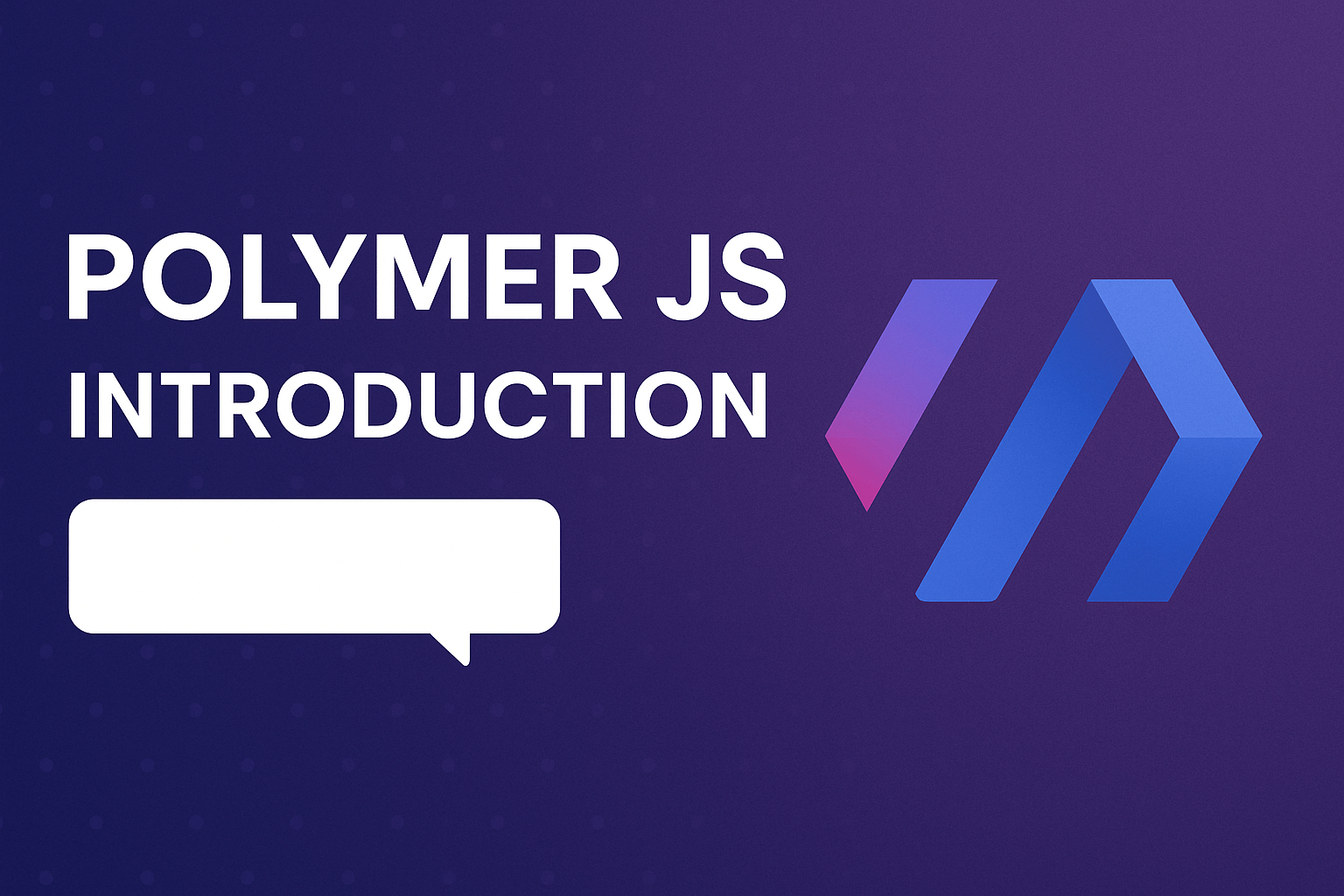
In this article, we’ll see Polymer js Introduction.
Table of Contents
In the ever-evolving landscape of web development, building modular, reusable, and customizable components is essential for creating modern web applications.
Polymer.js emerges as a cutting-edge JavaScript library that leverages the power of web components, enabling developers to easily build sophisticated applications. In this blog post, we will delve into the world of Polymer.js, exploring its key features and advantages and showcasing how it can revolutionize your web development workflow.
What is Polymer JS
Polymer.js is a JavaScript library created by Google that allows reusing the HTML elements for building applications with components.
Polymer.js is a library that allows web developers to build custom HTML elements on top of primitive ones. They have their own attributes, properties, methods, and events. So polymer acts as a bridge between web components and custom elements.
Polymer comes with material design elements by default. You can find more about polymer custom elements here:
Page on polymer-project.org
One of the best things about Polymer JS is its flexibility. Polymer JS components can be used to create any type of web component, from simple buttons and inputs to complex dialogs and layouts.
Another great feature of Polymer JS is its performance. Polymer JS components are incredibly fast, making them ideal for high-traffic websites.
If you are looking for a flexible and performant framework for building custom web components, then Polymer JS is the perfect choice for you.
Why use Polymer.js
- It allows creating our own custom elements easily using HTML, CSS, and JavaScript for adding interactions to the element.
- It is created by Google that provides cross-browser compatible applications along with web components.
- It provides both one-way and two-way data binding.
- It provides a Polymer command-line interface for managing projects from simple components to complicated web applications.
- Polymer JS is a open-source project, which means that it is free to use and modify.
- Polymer JS is supported by a large and active community, which means that there are a number of resources available to help you learn and use Polymer JS.
- Polymer JS is constantly being updated and improved, which means that you can be sure that you are using the latest and greatest version of the framework.
- Flexibility: Polymer JS components can be used to create any type of web component, from simple buttons and inputs to complex dialogs and layouts.
- Performance: Polymer JS components are incredibly fast, making them ideal for high-traffic websites.
- Ease of use: Polymer JS is designed to be easy to learn and use, even for beginners.
Advantages and Disadvantages of Polymer.js
Advantages of Polymer.js
- Polymer.js supports cross-browser compatibility.
- Polymer.js supports gesture events so it is a good choice to develop mobile and computer applications.
- Fast and easy hybrid mobile application development.
- Supports one-way and two-way data binding.
- Provides polymer command-line interface to manage complex projects.
Disadvantages of Polymer.js
- You’ll need to try harder to make components in every browser. On the other hand, you’ll know how different browser works with Shadow DOM.
- It can be slow in performance(right now) on mobile as the mobile device does not have as powerful JS engine as on the web.
- IE is a bitch. (You know what I mean)
Polymer.js empowers developers to embrace the power of web components and build modern, modular, and reusable components for web applications. By harnessing declarative templating, encapsulated styling, two-way data binding, and observers, Polymer.js streamlines the development process and enhances code maintainability.
With the support of a thriving community and robust tooling, Polymer.js stands as a powerful choice for developers seeking to leverage the capabilities of web components and unlock new possibilities in web development. Embrace Polymer.js and embark on a journey of creating highly customizable and scalable web applications.
I hope this article helps!